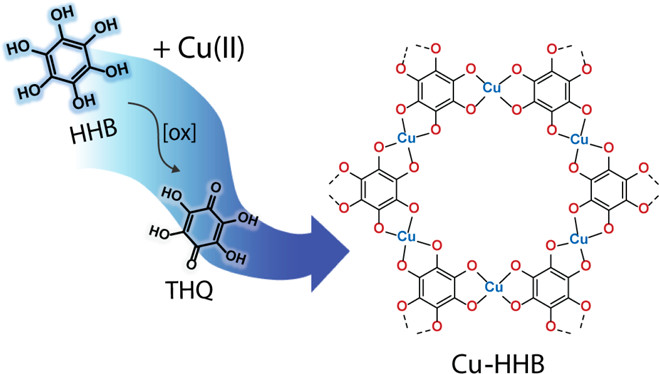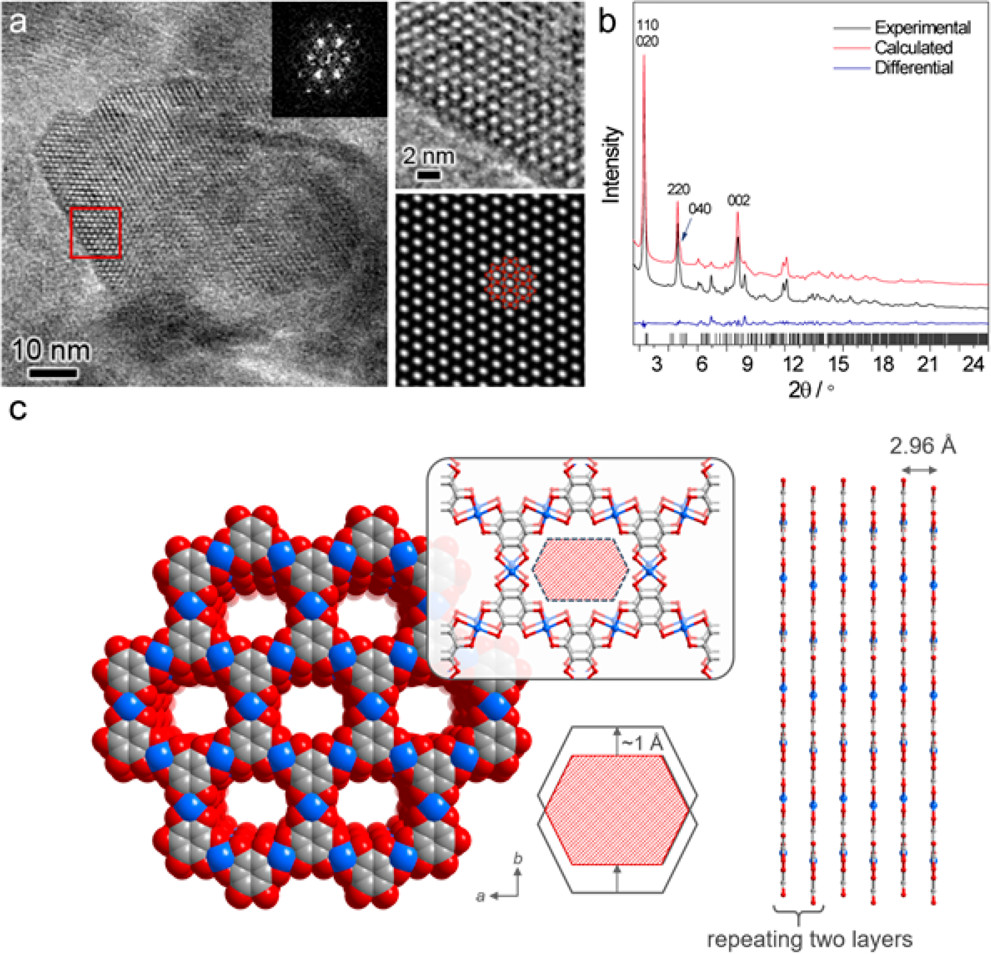Home >
News > Synthetic Routes for a 2D Semiconductive Copper Hexahydroxybenzene Metal–Organic Framework
Synthetic Routes for a 2D Semiconductive Copper Hexahydroxybenzene Metal–Organic Framework
Summary:
The authors from Stanford University, Stockholm University, and Argonne National Laboratory developed a 2D semiconductive copper–hexahydroxybenzene metal–organic framework (Cu-HHB) with ~1 eV bandgap and temperature-activated conductivity, achieving the first oxygen-analogue expansion of the M₃(C₆X₆)₂ c-MOF family for potential electronic, sensing and energy devices.

Background:
1. To address the lack of O-bridged conductive MOFs, previous researchers focused on N/S analogues (M-HAB, M-BHT) with high conductivity, yet the oxygen version M₃(C₆O₆)₂ had never been realized owing to irreversible bond formation and poor crystallinity.
2. The authors herein propose a kinetically controlled route using ethylenediamine as a competing ligand, obtaining highly crystalline Cu₃(C₆O₆)₂ (Cu-HHB) and an economical “shortcut” variant Cu-THQ from tetrahydroxyquinone.
Research Content:
1. Synthesis: Cu-HHB was synthesized under N₂ by reacting Cu(NO₃)₂·2.5H₂O with hexahydroxybenzene in water at room temperature with 3 equiv ethylenediamine; Cu-THQ was prepared similarly using tetrahydroxyquinone.
2. Characterizations:
1) BET: 158 m² g⁻¹ (Cu-HHB) and 143 m² g⁻¹ (Cu-THQ) after 60 °C water washing; microporous type-I isotherms.
2) SEM/TEM: plate-like nanosheets, interlayer spacing 2.96 Å, pore size ~1 nm honeycomb lattice.
3) UV–vis–NIR: absorption edge ≈1 eV; PESA HOMO –5.37 eV; XPS Cu²⁺ dominant; FT-IR & TGA confirm framework stability to 300 °C.
3. Application: Pressed-pellet four-point van-der-Pauw tests gave 7.3×10⁻⁸ S cm⁻¹ at 25 °C, rising to 2.0×10⁻⁶ S cm⁻¹ at 105 °C with Ea = 0.46 eV, demonstrating semiconductor behavior suitable for thin-film transistors and sensors.
4. Mechanism: Ethylenediamine forms soluble [Cu(en)₂]²⁺, slowing nucleation and favoring AB slipped-parallel stacking (Cmcm, a=13.11 Å, b=21.59 Å, c=5.92 Å); partial π–π overlap and CuO₄⁻¹ centers enable hopping conduction between domains.

Outlook:
This work delivers the long-sought O-analogue 2D c-MOF, establishes a scalable, low-temperature synthetic platform, and opens avenues for bandgap-tunable, air-stable MOF semiconductors via linker oxidation-state engineering.
Synthetic Routes for a 2D Semiconductive Copper Hexahydroxybenzene Metal–Organic Framework
Authors: Jihye Park, Allison C. Hinckley, Zhehao Huang, Dawei Feng, Andrey A. Yakovenko, Minah Lee, Shucheng Chen, Xiaodong Zou, Zhenan Bao
DOI: 10.1021/jacs.8b06666
Link: https://doi.org/10.1021/jacs.8b06666
The above review is for academic progress sharing. For any errors or copyright issues, please contact us for correction or removal.

